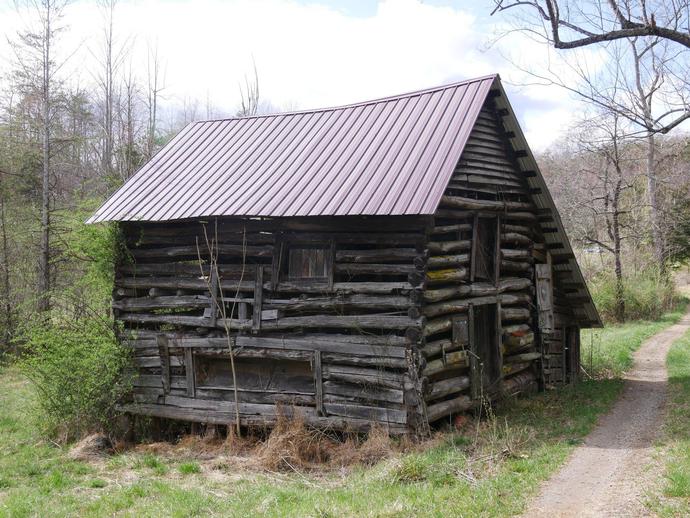March 21, 2021
We're reaching into the archives for today's #BenInNature update presented by our friends at Carter Bank & Trust! The following post was originally published on June 4, 2020.
You might look at this picture and think I'm getting pretty desperate for nature updates if I'm posting a picture of an old barn. However, today's update is actually about the building material!
This barn on my family property was constructed prior to the Civil War, and it was made out of American chestnut (Castanea dentata). The American chestnut was once considered one of the most important timber trees in the world, but disaster struck in the early 20th century when a fungus known as chestnut blight (Cryphonectria parasitica) was accidentally introduced into the U.S. from East Asia. The blight was first detected at the Bronx Zoo back in 1904, and by 1940, most mature American chestnuts had been wiped out by the fungus. It's estimated that between three and four BILLION chestnut trees were destroyed in the first half of the 20th century! The native range of the American chestnut tended to follow the Appalachian mountains, and it's estimated that as much as 25 percent of the trees along the Appalachians used to be American chestnut.
While some believe that the American chestnut is extinct, this actually isn't the case! While there are probably fewer than 100 surviving mature American chestnut trees in its native range, there are a number of pockets of American chestnuts west of the Mississippi. Many of these are the descendents of trees that were planted by settlers in the 1800s. Since the chestnut blight fungus requires hot, humid summers to thrive, trees planted in dryer regions along the west coast tend to survive.
While chestnut shoots still pop up in their old native range, the blight tends to kill them within ten years. The main problem is that the fungus uses oak trees as a host; while oaks aren't affected by the blight, they allow it to stay alive for generation after generation and wipe out any new American chestnuts.
There have been a number of attempts to breed blight-resistant American chestnuts through a variety of methods; maybe one day, the Appalachians will again be filled with towering chestnut trees.
ABOUT #BenInNature
Social distancing can be difficult, but it presents a great opportunity to become reacquainted with nature. In this series of posts, Administrator of Science Ben Williams ventures outdoors to record a snapshot of the unique sights that can be found in the natural world. New updates are posted Monday - Friday, with previous posts highlighted on the weekends. This series of posts is made possible thanks to the support of VMNH Corporate Partner Carter Bank & Trust (www.cbtcares.com).
NATURE PHOTO IDENTIFICATIONS
If you discover something in nature that you would like help identifying, be sure to message us right here on Facebook with a picture (please include location and date of picture) and we'll have our experts help you identify it!

 Hours & Admissions
Hours & Admissions Directions
Directions

